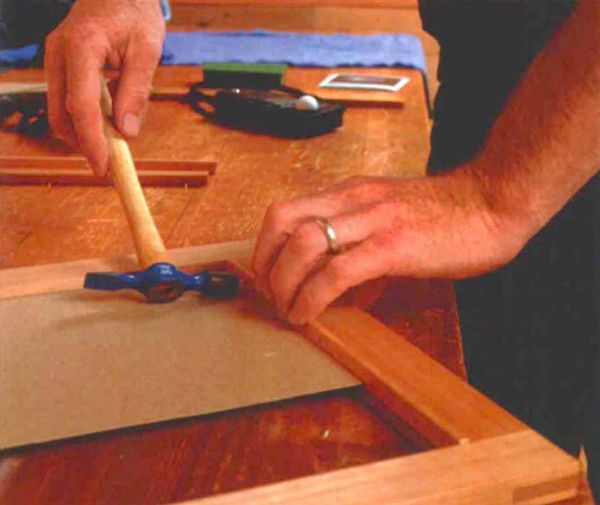
Synopsis: Tony Konovaloff uses deep rabbets and beveled strips of wood to hold glass in a display cabinet. He says it’s simple and practical and it looks good whether the door is open or closed. He explains how to design for glass, how to choose the thickness and temper and other features; how to install it and fasten the strips, and how to shape the beveled strips. The article includes side information on glass manufacturing methods.
I’ve opened a lot of glass doors on finely crafted cabinets and cringed. The joints are tight, the finish is fine, but the glass is held in place by methods that look, at least to my eye, crude. I’ve seen big, clunky strips held in place by #8 screws, badly done putty and perhaps worst of all, vinyl strips screwed or even stapled to the door frame.
What looks much better is glass set in a relatively deep rabbet in the frame and held in place with beveled strips of wood on the back side of the door. The strips function like quarter-round molding, but the profile is more refined. The strips, which are easy to make, are fastened to the shoulder of the rabbet with brass escutcheon pins. Should the glass need to be replaced, the strips easily pop off and can be reused.
Holding glass in a door this way is nothing new. It’s an old technique that works because it’s simple and practical, and it looks good whether the door is open or closed.
Designing for glass
With glass-front cabinets, the focus is not on the furniture but on what’s inside it. Before you begin making the cabinet, think about how a glass front will affect the design and construction. For instance, everything is now visible, so the layout and fit of the joints on the inside of the cabinet are as important as those on the outside.
Glass thickness and temper—Standard window glass is only in. thick, and I use it almost exclusively. It’s called single thickness float glass, and I buy it cut to order at a local glass shop. When safety is a factor (when the glass will be near the floor in a household with children, for example), I use tempered glass. The thinnest readily available size of tempered glass is in., and it has to be special-ordered.
I wouldn’t use beveled strips where the glass is thicker than in. because the rails and the stiles must be beefed up to accommodate the glass and the larger strips. Unless the cabinet use for a wooden panel front looks too heavy with glass.
From Fine Woodworking #116
For the full article, download the PDF below:
Fine Woodworking Recommended Products

Dubuque Clamp Works Bar Clamps - 4 pack

Bessey EKH Trigger Clamps






















Log in or create an account to post a comment.
Sign up Log in